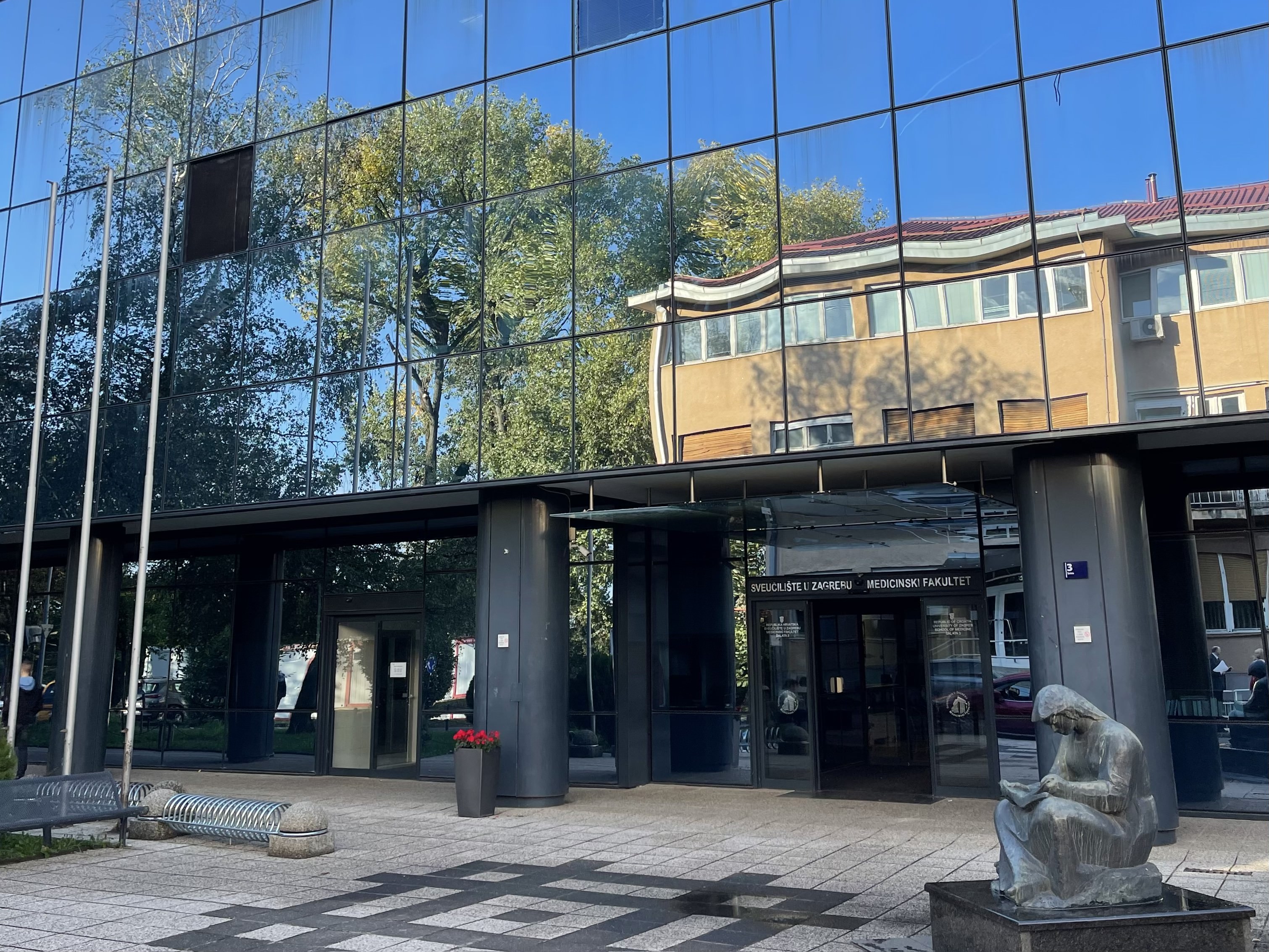The University of Zagreb School of Medicine (UZSM/ZSM) is the oldest, most respected and largest institution offering medical studies in the Republic of Croatia. The decision on its establishment was adopted by the Croatian parliament in January 1917, which is a precedent in the Croatian higher education and testifies that already back then an awareness of the significance of academic medicine on the national ground existed, not only for the development of the medical profession, but also of the entire society. Classes officially started a year later after the inaugural lecture of Drago Perović About the direction of teaching and research in anatomy in the hall of the University of Zagreb. The first professors were appointed, which was followed by the establishment of the institutes: Department of Anatomy, Morphology‐Biological Institute, Medical‐Chemical Institute, Institute of Physiological, Pathological‐Anatomical Institute, Department of General Experimental Pathology and Pharmacology and Public Health Institute. In the period from 1920 to 1922 most of the clinical departments s were also established. In 1927, the Zagreb School of Medicine had a total of 17 teaching establishments, among which the oldest was the Sisters of Mercy Hospital, and in 1937 that number increased to 19. Most areas of the Faculty were on Šalata, on the area that was intended for the construction of the entire Medical School. In the academic year 1938/39, the total number of stu‐ dents at the Faculty was 921. After the Second World War, there was a need for more doctors, which in the year 1948/49 resulted in a significant increase in the number of students (2855). Since the academic year 1965/66, the practice of limited registration under the terms of an entry exam is established.
The development of medicine and health care in Croatia is inseparable from the University of Zagreb School of Medicine. Among the distinguished members of the Croatian medicine throughout history, and still today, by far the most doctors who have been or are professors come from the Zagreb School of Medicine. For decades, it was the only institution for doctors in our country. In the fifties of the last century, it came to an increase in the need for medical studies in other parts of Croatia, and an initiative for the establishment of the School of Medicine in Rijeka was started at the Zagreb School of Medicine, which started operating in 1955. Medical studies in Split and Osijek, were opened as regional branches of the Zagreb School of Medicine in 1979, they became independent in 1997 (Split) and 1998 (Osijek). The Dental School of Medicine in Zagreb became independent in 1962, and in 1997, the Health Studies were dissociated. Since the beginning of the 90s, the Faculty has undergone significant changes. One of the most significant was the transition from five to six years of study. In the academic year 1990/91, the first generation of students for the teaching program of six years of study was enrolled, the new curriculum was accepted, and subjects were introduced in the sixth year of study that integrate previously acquired knowledge, optional courses throughout the study based on problem solving and innovations in teaching methods and verification of acquired competences. In 2002/03, courses organized in blocks were also implemented in preclinical subjects. As the study of medicine, as well as other studies in biomedicine and health care, is specific to each university as a link between the academic and the professional community, i.e. the science, teaching and practice, any changes in these systems (Ministry of Science, Education and Sports as well as the Ministry of Health) were reflected in the functioning, performance, challenges and problems in the years that followed. It is not just a feature of the University of Zagreb School of Medicine, but also of other medical schools in the Republic of Croatia.

